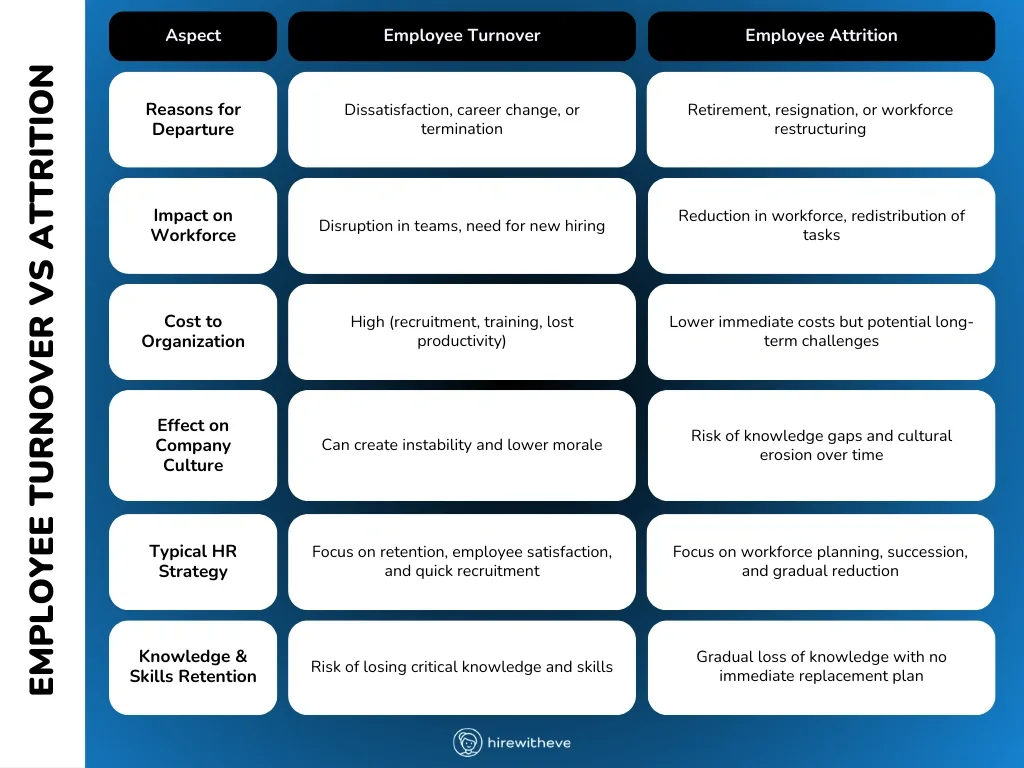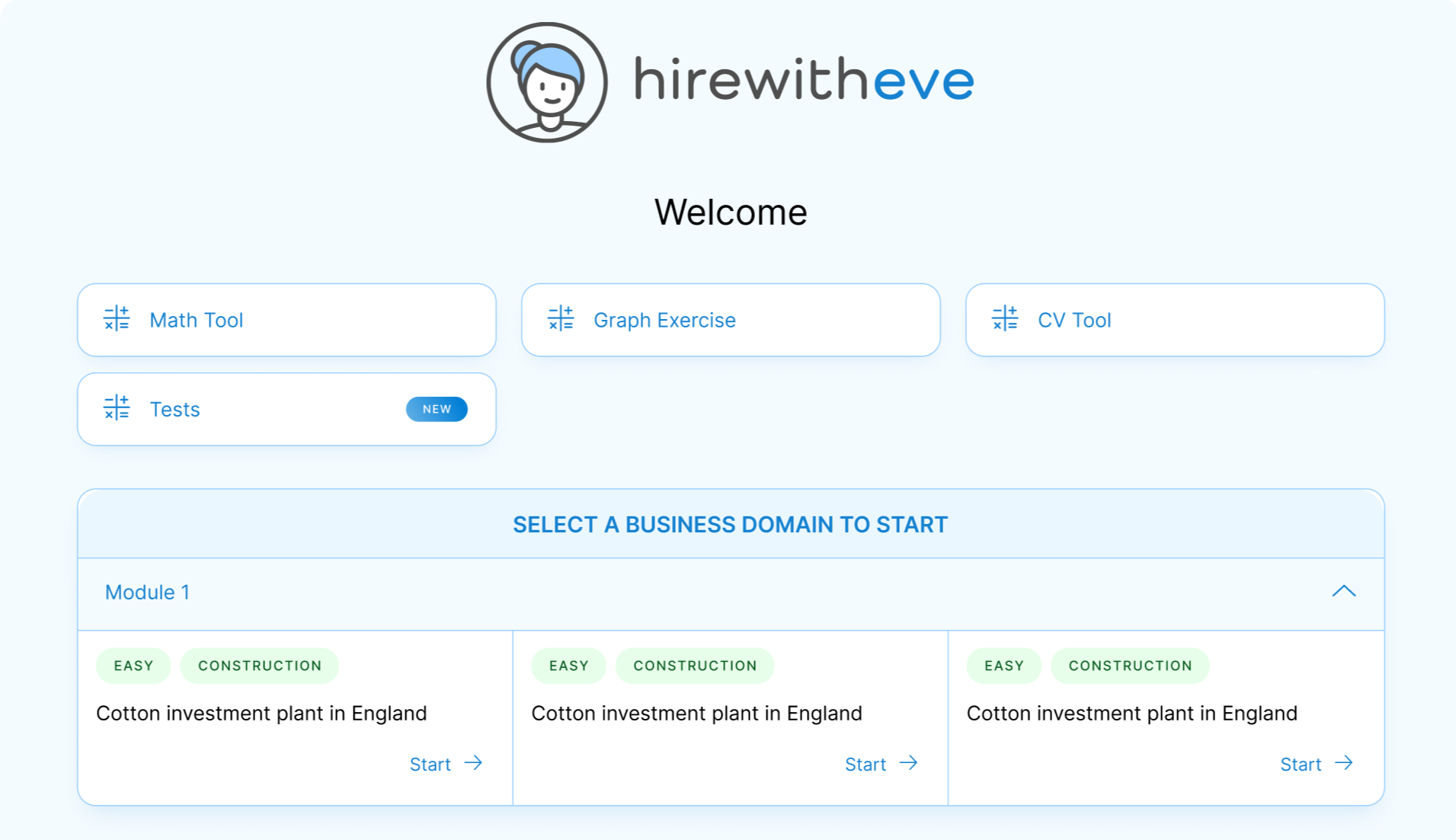What Is Employee Turnover vs. Attrition? Key Differences EXPLAINED

In the world of HR and talent acquisition, understanding the nuances between employee turnover vs attrition is crucial for creating effective workforce strategies. Both concepts are indicators of changes within an organization's staff but have different implications when it comes to managing a company’s human resources.
Employee turnover typically refers to employees leaving a company and being replaced, while attrition points to employees leaving without immediate replacement. As HR managers and talent acquisition specialists, knowing the difference between employee turnover vs attrition can significantly influence hiring decisions, retention strategies, and overall company culture.
In this blog, we will explore the key differences between employee turnover vs attrition, discuss why they matter, and how talent acquisition professionals can use these insights to optimize their strategies.
We’ll also look at recent industry data to provide context for these trends and explain why companies are paying closer attention to them now more than ever.
Table of contents
What is Employee Turnover?
Employee turnover refers to the rate at which employees leave an organization and are replaced by new hires. This metric is typically calculated by dividing the number of employees who leave during a specific period by the total number of employees.
Turnover is often viewed as a negative trend when high, as it can indicate dissatisfaction, poor management, or other internal issues within the organization. However, not all turnover is detrimental — some level of turnover can introduce fresh talent and new perspectives into a company.
There are two main types of employee turnover:
Voluntary Turnover: When employees choose to leave the company on their own, typically for better opportunities, career advancement, or personal reasons.
Involuntary Turnover: When employees are let go due to layoffs, terminations, or company restructuring.
When looking at employee turnover vs attrition, turnover specifically refers to cases where an organization actively seeks replacements for the departing employees. Companies with high turnover rates often incur significant costs in terms of recruitment, training, and lost productivity.
What is Employee Attrition?
On the other hand, employee attrition occurs when employees leave a company, but their roles are not immediately filled. This often happens due to retirement, resignation, or internal restructuring, where the company decides that the position is no longer necessary. Unlike turnover, attrition can be seen as a natural reduction in the workforce over time.
Attrition is often viewed more positively than turnover, as it may signal a strategic decision by a company to reduce staff without the need for layoffs. It can also result in cost savings in the long run. However, too much attrition without strategic planning can lead to knowledge gaps, decreased employee morale, and a loss of organizational culture.
While employee turnover vs attrition is both metrics used to measure workforce changes, attrition does not involve replacing outgoing employees, making it a passive form of reduction.
Key Differences Between Employee Turnover vs Attrition
The core distinction between employee turnover vs attrition lies in the replacement of staff. In cases of turnover, employees who leave are replaced, often quickly, to maintain business continuity. In contrast, attrition does not result in immediate replacements, and the company may choose to redistribute the workload among remaining employees.
Here are some additional key differences:

Understanding these differences in employee turnover vs attrition is essential for HR professionals when devising strategies to manage the workforce effectively. High turnover rates could indicate systemic issues that need addressing, while high attrition may reveal opportunities for workforce planning and streamlining operations.
Impact on Business Performance
Both employee turnover and attrition can have significant effects on an organization’s performance. High employee turnover often leads to:
Increased hiring and training costs: Frequent hiring to replace departed employees can drain resources and increase recruitment budgets.
Reduced employee morale: Constant turnover can create instability in teams, reducing motivation among remaining staff.
Loss of institutional knowledge: With each departure, organizations risk losing key knowledge that is vital to their operations.
In comparison, high attrition can:
Slow down innovation and growth: As roles remain unfilled, departments may lack the necessary personnel to push initiatives forward.
Impact company culture: If experienced employees leave without replacements, the culture that they helped foster may erode over time.
Overwork remaining employees: When a company does not replace workers who leave, the workload is often distributed among the remaining staff, which can lead to burnout and decreased productivity.
Understanding the impact of employee turnover vs attrition is critical for HR managers, as these factors play a direct role in organizational health and productivity.
What are the Strategies to Reduce Employee Turnover vs Attrition?
Managing employee turnover vs attrition effectively requires proactive measures and strategic planning. Here are a few strategies that can help:
Retention Programs: Developing strong retention strategies can help reduce voluntary turnover. This includes offering competitive benefits, providing career development opportunities, and ensuring a positive work environment.
Workforce Planning: Attrition can be managed by carefully planning for retirements and other natural reductions in staff. By redistributing responsibilities gradually or automating certain tasks, businesses can manage attrition without disrupting operations.
Exit Interviews: Conducting exit interviews can provide valuable insight into why employees are leaving. This can help identify systemic issues and make improvements to reduce future turnover.
Succession Planning: For positions that may experience attrition due to retirements or other long-term vacancies, having a succession plan in place ensures that key roles can be filled internally without disruption.
Addressing both employee turnover vs attrition helps organizations maintain a strong workforce while minimizing the negative impacts of staff changes.
Conclusion
Understanding the dynamics of employee turnover vs attrition is vital for creating a balanced, efficient workforce. Both turnover and attrition have their pros and cons, but effectively managing them can improve organizational stability, morale, and productivity.
Platforms like HirewithEve can assist talent acquisition specialists and HR managers in tackling these challenges. Through features such as skills-based hiring, remote hiring support, and analytics dashboards, HirewithEve offers a comprehensive solution for tracking and managing employee turnover vs attrition.
Whether it's identifying the causes of high turnover or planning for attrition through strategic workforce management, HirewithEve provides the data-driven insights needed to make informed decisions and optimize the hiring process.
With HirewithEve, HR managers can take proactive steps to reduce turnover and manage attrition, ensuring that their organizations are equipped with the right talent at the right time.
Target Your Talent
Unlock tailored solutions for your recruitment and hiring needs with Eve Platform's extensive case study library.
Subscribe now to enhance your HR expertise and excel in your role.
Free Resources

Transforming Hiring: 7 Key Recruiting Metrics
Enhancing recruitment processes with data-driven insights for better hiring outcomes.

Reducing Hiring Bias with Hirewitheve.
Utilizing Hirewitheve to combat bias and streamline recruitment processes effectively.

Hiring Detail-Oriented Candidates
HirewithEve enhances hiring by accurately assessing candidate's attention to detail-oriented.








